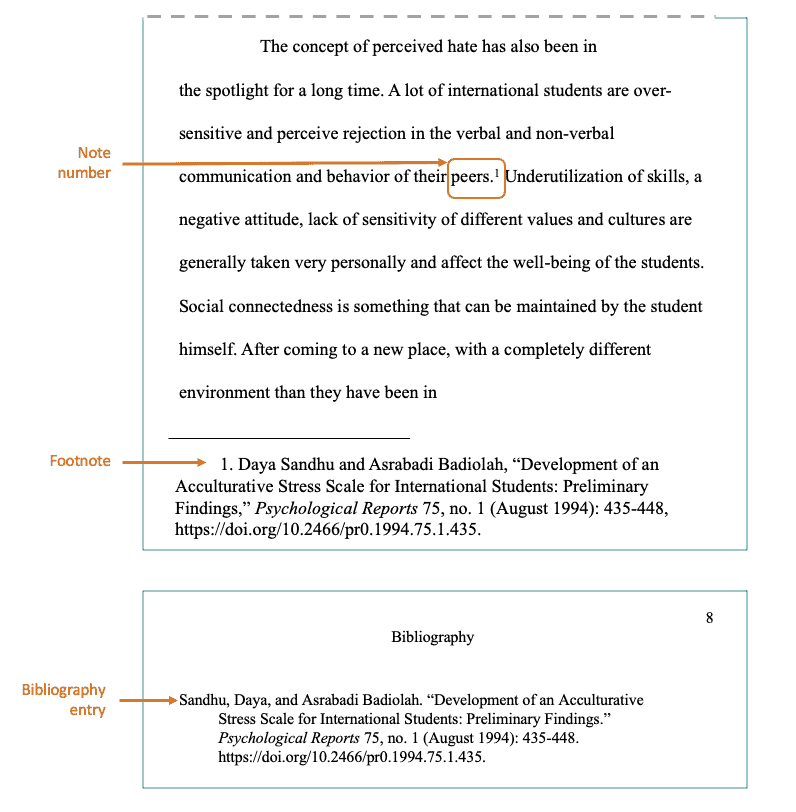Chicago Style Footnote Citation - If you're a student or a researcher and you're looking for a way to properly reference your sources, then you may want to consider using the Chicago Style Footnote Citation. This citation style is widely used in the academic world and is known for its use of footnotes and endnotes, which provide additional information related to the citation. In this article, we'll be taking a closer look at the Chicago Style Footnote Citation, discussing its basic elements and providing you with tips, ideas, and how-tos that can help you use this citation style effectively.
What is the Chicago Style Footnote Citation?
The Basics
Essentially, the Chicago Style Footnote Citation is a citation style that uses footnotes or endnotes to cite sources. It was first developed by the University of Chicago Press over a hundred years ago and has since become one of the most widely-used citation styles in academia.
The Chicago Style Footnote Citation is typically used in the fields of history, literature, and the arts. It's also used in some social sciences and natural sciences, although it's less common in these fields.

How to Create a Chicago Style Footnote Citation
The Elements
In order to create a Chicago Style Footnote Citation, you need to include certain elements. These elements include the author's name, the title of the source, publication information (such as the publisher and the date), and the page number or range of pages.
You also need to include a superscript number at the end of the citation, which corresponds to a footnote or endnote at the bottom of the page (or at the end of the paper).
Tips for Using the Chicago Style Footnote Citation
Be Consistent
One of the most important tips for using the Chicago Style Footnote Citation is to be consistent.
Make sure that you're using the same citation style throughout your paper or project. This means that you should use the same font, spacing, and formatting for each citation.
Consistency can help you avoid confusion and ensure that your paper looks professional.
Use Clear and Concise Language
Another tip for using the Chicago Style Footnote Citation is to use clear and concise language.
Make sure that your footnotes or endnotes are easy to read and understand. Avoid using jargon or overly technical language that may confuse your readers.
Also, remember to keep your footnotes or endnotes brief. They should provide additional information related to the citation, but they shouldn't be too long or complicated.
Include all Required Information
Finally, make sure that you're including all the required information in your Chicago Style Footnote Citation.
Double-check that you have the author's name, the title of the source, publication information, and the page number or range of pages. Missing one of these elements can result in an incomplete citation that looks unprofessional.

Ideas for Incorporating the Chicago Style Footnote Citation into Your Work
Use It for Your Next Research Paper
If you're working on a research paper, then you may want to consider using the Chicago Style Footnote Citation.
The use of footnotes and endnotes can help you provide additional information and context for your citations, which can make your paper more informative and engaging.
Extend It to Non-Academic Writing
While it's most commonly used in academia, the Chicago Style Footnote Citation can also be used in non-academic writing.
For example, if you're writing an article, blog post, or book, then you may want to use the Chicago Style Footnote Citation to add credibility and authority to your piece.
Share It with Peers and Colleagues
If you've found the Chicago Style Footnote Citation to be helpful in your work, then you may want to share it with your peers and colleagues.
Not only will this help them improve their own research, but it can also help to standardize citation practices and improve the overall quality of academic writing.

Conclusion
The Chicago Style Footnote Citation is a widely used citation style that provides additional information related to the citation, making it a great choice for academic writing.
By following the basic elements of the Chicago Style Footnote Citation and using tips, ideas, and how-tos, you can use this citation style effectively in your own work.
Remember to be consistent, use clear and concise language, and include all required information in your citations. With these techniques, you can elevate your writing and improve your overall academic performance.

Read more articles about Chicago Style Footnote Citation